SBVS252B October 2014 – February 2019 TPS735-Q1
PRODUCTION DATA.
- 1 Features
- 2 Applications
- 3 Description
- 4 Revision History
- 5 Pin Configuration and Functions
- 6 Specifications
- 7 Detailed Description
- 8 Application and Implementation
- 9 Power Supply Recommendations
- 10Layout
- 11Device and Documentation Support
- 12Mechanical, Packaging, and Orderable Information
Package Options
Mechanical Data (Package|Pins)
- DRB|8
Thermal pad, mechanical data (Package|Pins)
- DRB|8
Orderable Information
6.6 Typical Characteristics
Over operating temperature range (–40°C ≤ TJ, TA ≤ 125°C), VIN = VOUTnom + 0.5 V or 2.7 V (whichever is greater), IOUT = 1 mA, VEN = VIN, COUT = 2.2 μF, and CNR = 0.01 μF, unless otherwise noted. TA = 25°C, unless otherwise noted.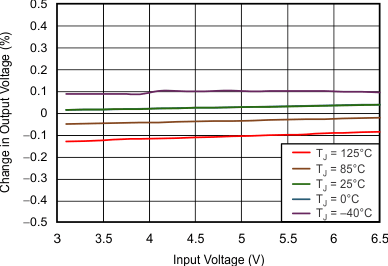
| IOUT = 100 mA |
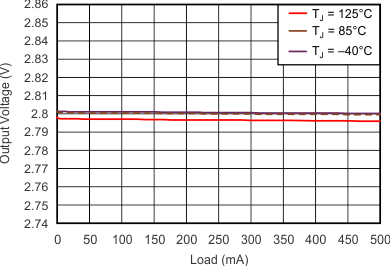
| The y-axis range is ±2% of 2.8 V |
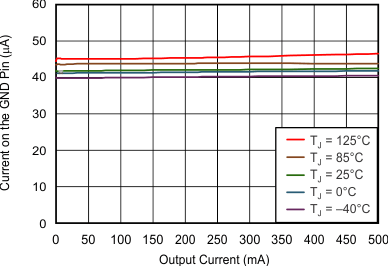
Output Current
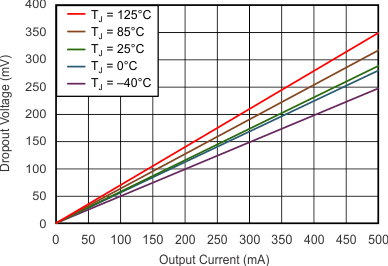
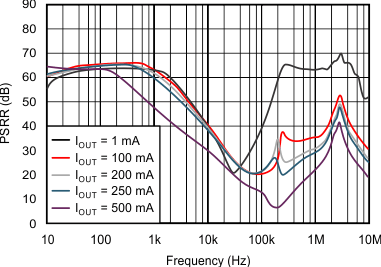
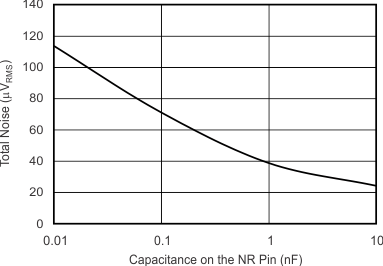
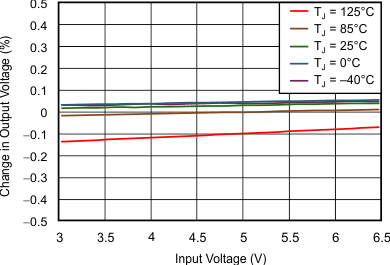
| IOUT = 100 mA |
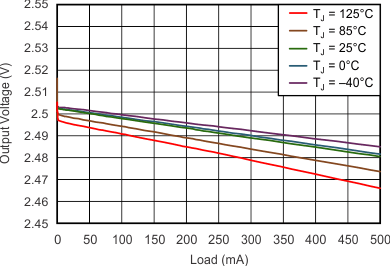
| The y-axis range is ±2% of 2.5 V |
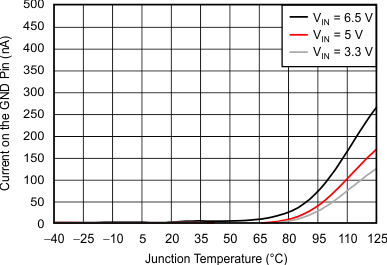
| VEN = 0.4 V |
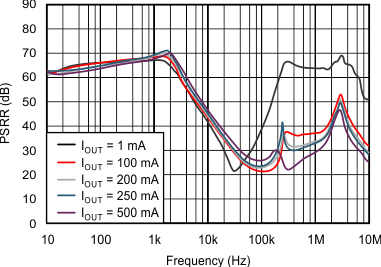
(VIN – VOUT = 1 V)
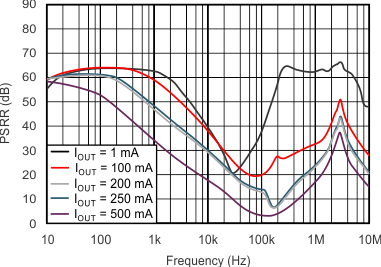
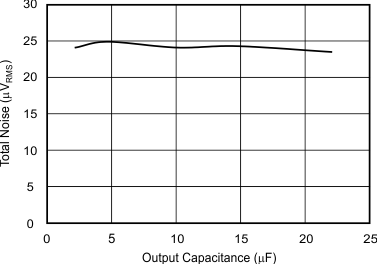
| CNR = 0.01 µF, IOUT = 1 mA |